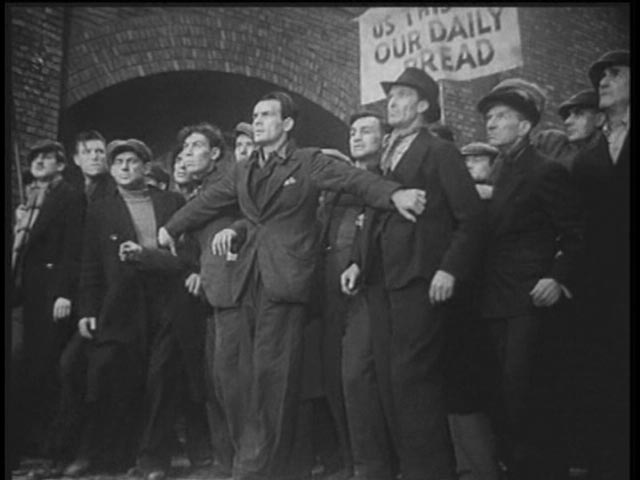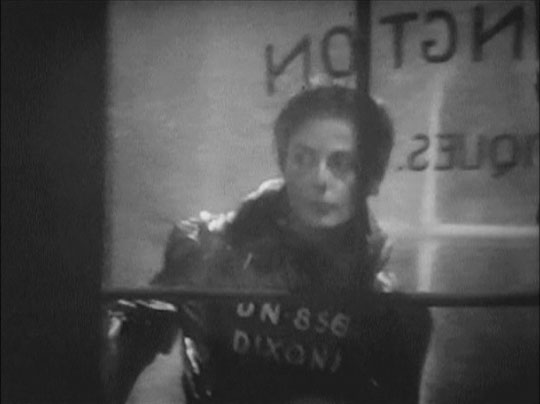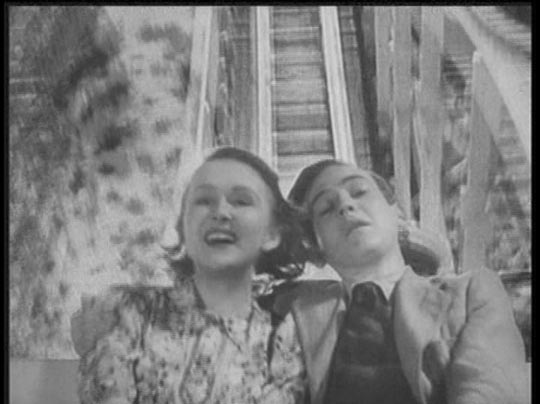Quality control

Rapidly developing video technologies are altering not just our expectations but also our responses to the experience of watching movies. Blu-ray, hi-def TVs, the digital technologies which are used more and more in production – all have helped to create particular standards which many viewers now apply to virtually everything they watch. A lot of on-line reviewers seem to rate movies for their “demo quality” rather than their content, as if the purpose of watching a movie is to bask in the power of the devices used to watch it rather than to immerse yourself in the film at hand.

Time was (old guy talking here!) I’d be happy to catch a movie on poor-quality broadcast television, complete with pan-and-scanned images and annoying commercial breaks, because that would be the only way I could see it. I remember the first time I saw Mario Bava’s Operazione Paura (Kill, Baby, Kill!, 1966). It was late at night in the living room in Neepawa with the roof antenna pulling in a weak signal from CKND in Winnipeg, 110 miles away. I watched the film through a multi-coloured haze of snow which became an integral part of the experience – a beautiful Gothic ghost story which itself appeared as the ghost of an image. I was almost disappointed when I finally got to see the film on DVD years later and that fog was gone and I could see everything clearly. I had to readjust, and watch it in a different way to appreciate it all over again as the great movie it is.

Of course, as home video technology developed, it was exciting to be able to see improvements in quality – even VHS was better than broadcast TV (no commercials), and eventually you could actually start to see movies in their original aspect ratios (though many times I heard people complaining in video stores about those stupid black bars above and below the image; apparently a lot of people felt that large areas of their TV screens were being wasted and they preferred pan-and-scan because they got “more” image, not realizing that they were actually getting less).

Then laserdisks offered something even closer to the theatrical experience – sharper, clearer images, better sound. I remember how startled I was by the look of Byron Haskin’s War of the Worlds (1953) on laser, the colours almost liquid, the details of the image revealing things I’d never seen before.
But even that pales beside what eventually appeared on DVD, and now Blu-ray, with widescreen hi-def televisions. Those people who used to complain about letterboxing on their 4:3 TVs have been transformed, now expecting every movie to fill their 16:9 screens … it’s amusing (but also sad) to read comments on sites like Amazon in which customers complain that, say, Citizen Kane or Casablanca is cropped and not shown in its “original widescreen” ratio. With little or no sense of film history, many people’s responses are dictated by the machines they use to watch movies.

This tension between the films themselves and the means by which we view them in some ways endangers appreciation of the content of film history. Some viewers are dissatisfied and complain about the visual quality of silent films, those often somewhat unstable, flickering, ethereal images which lack the eye-piercing clarity of hi-def video and thus are perceived as inferior (not “demo quality”). And if the only print source of some rare title is battered and faded, its presentation is now automatically accompanied by apologies and a humble hope that the deficient quality “won’t interfere with your enjoyment” … when the mere fact that we are actually able to see something rare and hitherto completely unavailable should fill us with excitement and appreciation (even the recent restoration of the almost complete version of Fritz Lang’s Metropolis was accompanied by these warnings and apologies!).

These thoughts arise out of recent viewing of rather poor quality DVDs of two highly desirable titles: John Baxter’s Love on the Dole (1941) and Rudolph Cartier and Nigel Kneale’s 1954 BBC adaptation of Nineteen Eighty-Four (since mentioning the latter in my post on Kneale a while back, I’ve managed to obtain a copy from a seller on Amazon UK). Both are available on DVDr through Amazon or eBay and have an air of the bootleg about them (though the seller I got Love on the Dole from assures me that it’s a legitimate copy, manufactured with full rights).

In some ways, Nineteen Eighty-Four was easier to watch because it’s a kinescope of the original live broadcast and I was able to make the necessary adjustments to accommodate that fact. The image is somewhat soft and distorted because that’s what you get with a kinescope (a filmed record shot directly off a studio monitor during the original broadcast); even Criterion’s excellent set The Golden Age of Television had these drawbacks – they’re a technical limitation which there is no way to get around. In this sense, those limitations become almost invisible as you watch and you can simply appreciate the quality of the writing and performance (both very high) and the ingenuity and imagination shown by Cartier in his staging, with seamless cutting between the live studio scenes and effective filmed inserts and transitions shot in areas of London still in ruins from the war.

Gaunt Peter Cushing makes a far better Winston Smith than chunky Edmond O’Brien in Michael Anderson’s feature adaptation from two years later, and Andre Morell (who would later play Kneale’s Professor Bernard Quatermass in the third BBC series, Quatermass and the Pit [1958-59]) gives a sinister charm to the Party boss O’Brien who seduces then destroys the dissatisfied Smith. Strangely, the wonderful Donald Pleasance appears in both the BBC version and the feature, as Smith’s co-worker in the first, then as his neighbour in the second.

Made just five years after the book’s publication, the Cartier-Kneale version has an immediacy which is actually helped by its live television origins, while the feature now seems more compromised and dated, although the restrictions of television elided much of the torture O’Brien subjects Smith to. It seems odd now that the slightly weakened final act was one of the chief causes of viewer outrage at the time, hard to believe with all the grim atrocities television has since offered up as entertainment.
NOTE: This BBC adaptation of Nineteen Eighty-Four was eventually given a legitimate release by the BFI in a two-disk dual-format edition with substantial extras.
*

John Baxter’s Love on the Dole is the work of a filmmaker who had a highly prolific career from the early ’30s to the mid ’50s, but is essentially unknown today. As far as I know, the only previous film by him that I’ve seen is the very disappointing Crook’s Tour (1941), a not-very-funny comedy adventure featuring Charters & Caldicott, the pompous British buffoons from Hitchcock’s The Lady Vanishes (and available on the Criterion edition of the latter) and Carol Reed’s Night Train to Munich (1940). But Love on the Dole, made the same year (with an Old Mother Riley comedy in between), is something quite different. Produced in the early years of the war, it looks back to the beginnings of the Great Depression and life in a poor working class district of Salford, in Lancashire. The production design is gritty and detailed and the performances, for the most part, excellent.

Perhaps Love on the Dole is most notable for the first appearance in a leading role by Deborah Kerr as the central character, Sally. (She appeared in a supporting role that same year in Gabriel Pascal’s film of G.B. Shaw’s Major Barbara.) Sally is the daughter of a struggling miner and his wife, with a younger brother who wants something more than to follow his dad into the pits. She falls for a local labour organizer while resisting pressure from a crooked businessman who finds her attractive. Both her father and brother lose their jobs, and when her fiance is killed during a police attack on an unemployed workers’ march, Sally finally submits to the businessman, becoming his mistress in exchange for him arranging for jobs for the men of the family.

The film is blatantly socialist, and its argument for change and a transformation of capitalism, which would put an end to the conditions which crush workers’ lives, would inflect post-war politics in Britain. But it’s not merely a piece of agit-prop; Baxter directs it as a fast-paced melodrama focused on the emotional lives of the characters as much as their social conditions. Peopled with vivid types who never devolve into caricature, the film is visually and narratively dense, in some ways reminiscent of Carol Reed’s The Stars Look Down from the previous year.

While the print used for this DVD is apparently in quite good shape – apart from some scratches and speckles, the image is quite rich in contrast, with a good range of gray tones and solid blacks – the transfer itself is spotty, with a distinctly low-res appearance and visible pixels in darker areas of the frame. Worse than that, though, is the muddy sound which renders large chunks of dialogue all but unintelligible. And for some peculiar reason, the entire soundtrack is slightly shifted out of sync, which makes for noticeable distraction throughout the film. (I should mention that when I pointed these deficiencies out to the seller, I was told that they would try to correct the problem, something which is at least possible as it turned out to be a burn-on-demand DVDr.)

So, while I was grateful for the opportunity to see the film at last, I was frustrated and at times irritated by the technical issues which got in the way. But I managed in the end to remind myself of what it used to be like to watch those fuzzy, commercial-plagued movies years ago, and I suppressed my irritation, seeing past the deficiencies of the presentation, and watched the movie for what it is: a terrific piece of work by a previously unknown director from a period which holds a particular interest for me.
NOTE: Love on the Dole was eventually released by the BFI in a dual-format edition in 2016 and again by Indicator as a Limited Edition Blu-ray in 2022, which included and expanded on the BFI’s extras.
Comments
Hi,
Thanks for bothering to review this. I’ve just seen it on a download which probably came from the same DVD you describe, with poor sound and visuals (but the first shot of Deborah Kerr, just before she wakes up, is still stunning!) but persevered despite being a convert to Blu-Ray. I totally agree with you, remembering watching films on a TV set that was black and white and always on the blink, and commercials to boot. How spoilt we’ve become! The very fact that these rare treasures are available in any watchable format is a boon. Never before have so many movies been available from any time in the past. This film is described as British Film Noir in The British Film Noir Guide, which is stretching a point, I think. It’s surprisingly bolshy for something made in wartime. Well worth a look. Thanks again for the interesting read and acute observations.
Regards,
Waldo